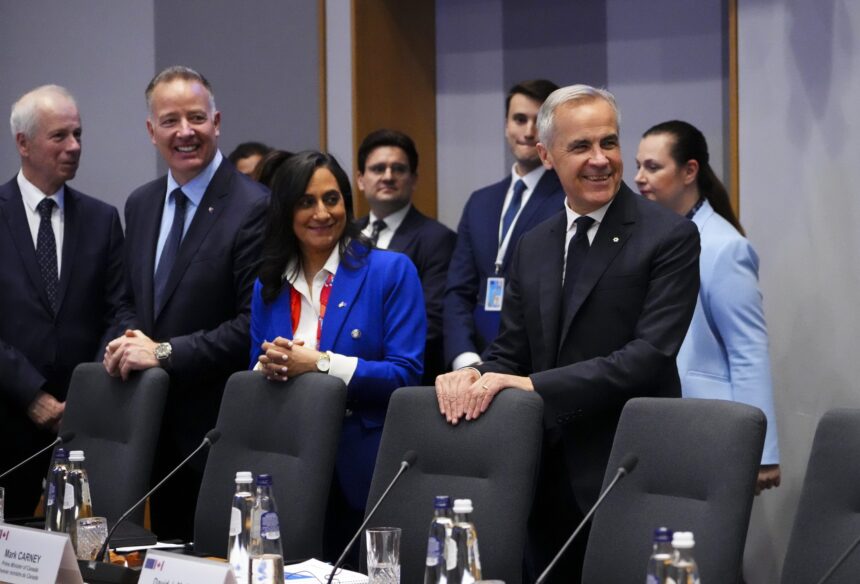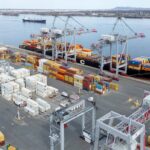In a dramatic shift from decades of defense policy, Canada’s 2025 commitment to reach NATO’s 2% defense spending threshold marks a watershed moment for a nation long criticized for riding on the coattails of its allies. This pivotal decision, announced amid growing global tensions, doesn’t merely represent a financial adjustment—it signals Canada’s evolving position on the world stage and recognition of shifting geopolitical realities.
“The days of Canada being perceived as a security free-rider are coming to an end,” remarked Defense Minister Anita Anand during yesterday’s parliamentary briefing. “Our commitment to reach the 2% threshold by 2025 demonstrates our resolve to be a reliable security partner in an increasingly unstable world.”
For context, Canada has consistently ranked among NATO’s lowest defense spenders, hovering around 1.3% of GDP in recent years—well below the alliance’s agreed 2% target. This longstanding shortfall has damaged Canada’s reputation among allies, particularly as Russia’s aggressive posture in the Arctic and China’s expanding global influence present direct challenges to Canadian sovereignty and interests.
Military analysts point to several factors driving this policy reversal. The Russian invasion of Ukraine dramatically altered the European security landscape, while growing tensions in the Indo-Pacific region have exposed vulnerabilities in Western defense postures. Additionally, consistent pressure from the United States—which shoulders approximately 70% of NATO’s total defense spending—has created diplomatic friction that Ottawa can no longer ignore.
“This isn’t just about appeasing Washington,” explains Dr. Margaret Vickers, senior fellow at the Canadian Institute for Global Affairs. “It’s a recognition that the world has changed. The rules-based international order Canada depends upon requires not just diplomatic but military investment to sustain.”
The spending increase—estimated at approximately $17 billion annually above current levels—will prioritize Arctic sovereignty, cyber capabilities, and modernization of Canada’s aging naval fleet. The Royal Canadian Navy’s surface combatant program, plagued by delays and cost overruns, will receive accelerated funding to address growing maritime challenges in the Arctic and Pacific regions.
However, the commitment faces substantial domestic challenges. Canadian political opposition has questioned the fiscal implications of such spending during a period of economic uncertainty. “We’re talking about the largest peacetime defense investment in modern Canadian history,” noted Parliamentary Budget Officer Yves Giroux. “This will require either significant cuts to other programs, tax increases, or acceptance of larger deficits—none of which are politically painless options.”
Public opinion remains divided. Recent polling suggests 52% of Canadians support increased defense spending, but that support drops to 38% when respondents are informed of potential budgetary tradeoffs. The regional divide is stark, with strongest support in Alberta and Atlantic Canada, while Quebec voters show the most resistance.
Defense industry representatives have welcomed the announcement. “This commitment provides the predictability needed for long-term investments in Canadian defense capabilities,” stated Christine Magnusson, president of the Canadian Defence Manufacturers Association. “We anticipate this will create approximately 25,000 highly skilled jobs across the country while enhancing our technological sovereignty.”
International reaction has been overwhelmingly positive. NATO Secretary General Mark Rutte called the decision “a welcome demonstration of Canada’s commitment to collective security,” while U.S. Defense Secretary Lloyd Austin described it as “a significant step toward a more equitable sharing of the alliance’s defense burden.”
Perhaps most importantly, this spending increase fundamentally alters Canada’s diplomatic positioning on the global stage. For a middle power that has traditionally emphasized its peacekeeping heritage and multilateral approach, the shift toward serious military capability represents a recalibration of how Canada views its role in global affairs.
As the implementation details emerge in coming months, the question remains: Is this newfound commitment to defense spending a temporary response to immediate pressures, or does it represent a fundamental reassessment of Canada’s place in an increasingly dangerous world?











